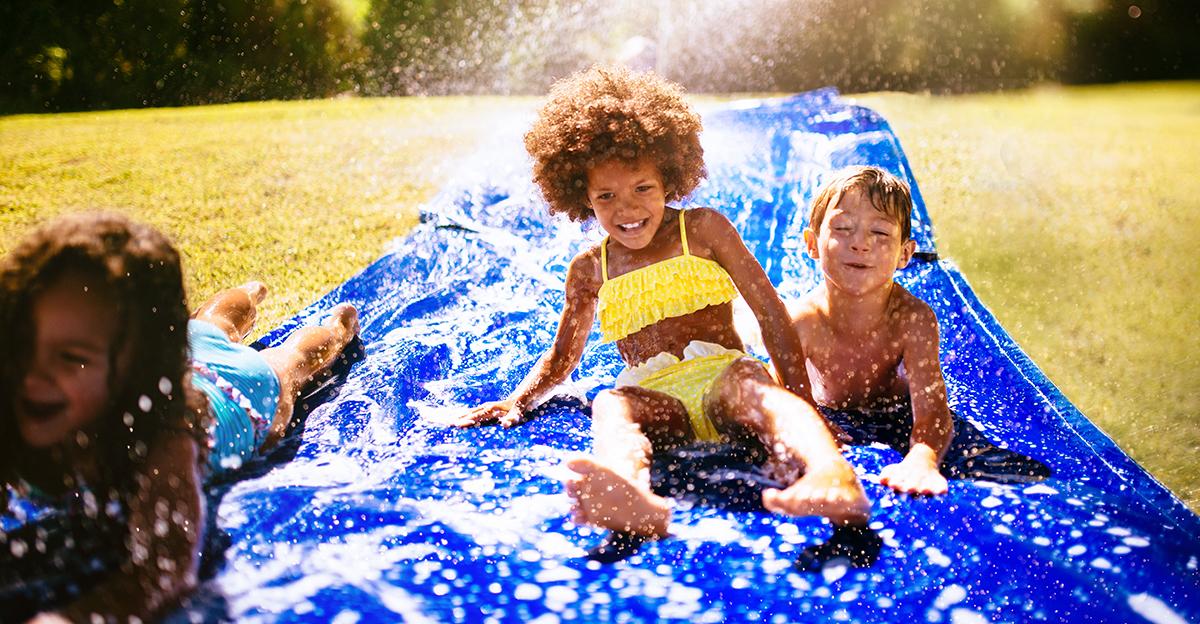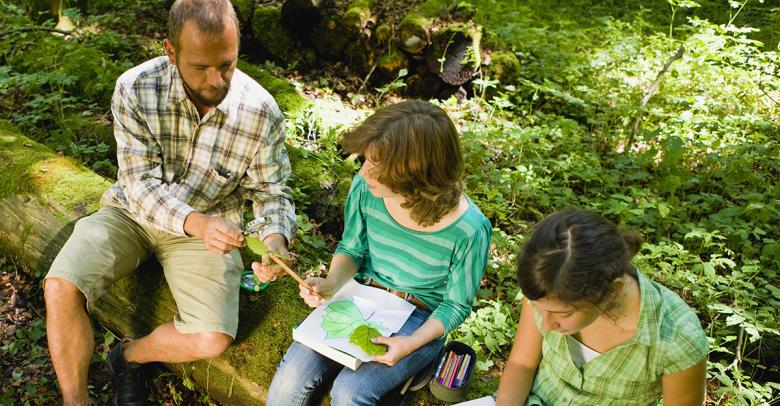If the weather cooperates, water games are a great addition to field day activities. Check out these ideas for bringing water games and challenges to your school’s field day activity list!
Tips for Adding Water Games to Field Day
Water games are always a huge hit with kids and a nice touch to add to your Field Day, especially if the weather is warm! Here are a few tips to make these successful:
- Set up these activities near the hose to keep a constant water supply. Use a large trash barrel or trough to keep extra water available.
- Be cautious about the surface you place activities on. Any surface will be wet and slippery, so keep running to a minimum to avoid falls.
- Tell kids to wear clothes and shoes that do well when wet.
- Warmer, sunnier weather means you must remind students to apply and reapply sun protection, especially when including water games.
- Have them bring towels and a possible change of clothes if they return to classes after Field Day.
- Prep all your materials beforehand. Buckets, troughs, hoses, sponges, cups, PVC pipes, water balloons, etc.
Sportime Field Day Activity Guide
If the weather fails, it’s a good idea to have some non-water activities ready. Don’t forget to take advantage of the free Field Day Activity Guide from the experts here at School Specialty PE. The guide includes cooperative, parachute, races, and relay activities for students of all ages.
View the Field Day Activity Guide
Field Day Water Games & Activities
Sponge Toss
(Need one sponge and one small bucket, with lines marking ½, ¾, and one gallon, per group of four)
With a large water bucket or trough in the center, have players create spokes radiating to their small buckets about 15-20 paces out. Groups of 4-5 form lines from the trough to their bucket. The object is to fill their bucket with water to a specified line (you call which one). They do that by soaking the sponge from the center trough and tossing it down the line. The player closest to their bucket squeezes the water into it, then runs back to the trough where they soak it up again and toss it down the line. There will be a new player squeezing the water into the bucket each round. If they get to the specified line too quickly, call out the next line!
Dixie Cup Relay
(Need 1-2 tiny cups holding about two ounces, and a small bucket with markings, as above per pair)
Set up with a trough filled with water in the center and pairs standing behind their buckets on the outer circle. One player at a time runs to the trough with their cup, fills it, runs it back, empties it into their bucket, then passes to their partner, who repeats. Continue until time is called. Who has the most water? You can vary this by having them put the cup on their head and balance it back to the bucket. Another variation uses flying discs as saucers to hold water. They can carry or put on their head.
Water Balloon Step Back
(Need one water balloon per pair)
Pairs are placed in two parallel lines across from their partner. Partners toss the balloon back and forth, taking a step back (away from each other) on command. The object is to keep their balloon from popping.
PVC Cooperative Fill-up
(Need one 2-3 foot long, 1.5-2 inch diameter PVC pipe, with at least 6 – ¼ inch holes drilled into a random pattern all over the pipe, one small bucket with markings, and one plastic cup per group of 4-5)
Set up with a trough filled with water in the center and groups standing behind their buckets on the outer circle. All players run to the trough together, each with a role: One player will use the cup to pour water into their pipe, another player puts their hand on the bottom of the pipe to stop water from coming out of it, and all others put fingers on the holes to keep water in the pipe. Once they fill the pipe to the top, they all move back to the bucket as a group and carefully let the water pour into it. Repeat, changing roles each round until the signal. Who has the most water?
Cooperative Version
Any of these activities can be reversed so all teams are moving from the outer circle to the inner to a common large bucket. The object is for all groups to fill it together.
Slip and Slide
Use a giant roll of thick Visqueen (polyethylene plastic sheeting) to create a 10 foot wide by 20-30 foot long slip area. Allow students to go on their bellies (done over grass or other softer material, NOT blacktop or dirt) or use bodyboards to go on their knees or bellies. Use the hose to continuously keep the area soaked. Students go one at a time, then run back to the beginning. Create a few of these so the wait time is not long. Always a smash hit!
Car Wash
(Need one spray bottle per two players)
Half of the students form two parallel lines about five paces apart. Each of these students have a spray bottle in hand (they form the Car Wash). The other half of the group is divided into two lines just outside the “corridor” of spray bottle holders. These are the “cars.” Turn on music, and the two lines of cars slowly move through the Car Wash as the washers spray them mercilessly with their water. Once out of the Car Wash, cars move back to the beginning and continue again. Continue for a full song, switch roles, and repeat for another song.
Remember to remind students to apply sun protection, play safely, and have fun!
More Field Day Tips & Activities
Still looking for a few ways to take Field Day to the next level? Check out the other articles on our blog and find tips, tricks, and other activity suggestions.






Leave a Reply